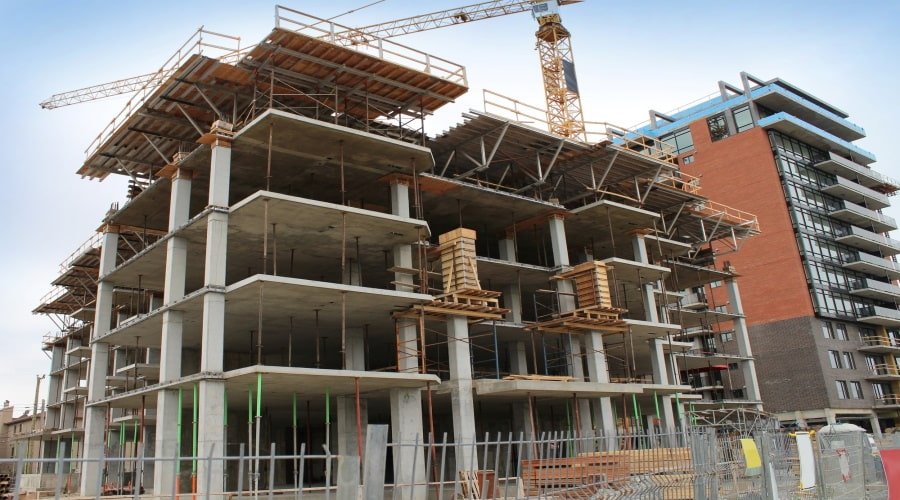Best Process For Building Commercial Construction
Constructing a commercial building is a complex, multi-phase process that requires careful planning, coordination, and execution. From initial concept to the final touches, each step must be meticulously managed to ensure the project is completed on time, within budget, and to the highest standards. Here, we outline the best process for building commercial construction, highlighting key phases and best practices.
1. Initial Planning and Feasibility Study
The foundation of any successful commercial construction project begins with thorough initial planning and a feasibility study. This phase involves:
- Defining Objectives: Clearly outline the purpose of the building, its intended use, and any specific requirements.
- Site Selection: Evaluate potential sites considering factors such as location, accessibility, zoning regulations, and environmental impact.
- Feasibility Study: Conduct a detailed analysis to assess the project’s viability, including financial projections, market analysis, and risk assessment.
2. Conceptual Design and Budgeting
Once the feasibility of the project is confirmed, the next step is to develop a conceptual design and establish a budget. Key activities in this phase include:
- Architectural Design: Collaborate with architects to create preliminary design sketches and floor plans that meet the project’s requirements.
- Cost Estimation: Develop a detailed cost estimate covering all aspects of the project, from materials and labor to permits and contingencies.
- Value Engineering: Evaluate design options to identify cost-saving opportunities without compromising quality or functionality.
3. Securing Financing and Permits
With a conceptual design and budget in place, securing financing and obtaining the necessary permits becomes the next priority. This phase involves:
- Financing: Explore various financing options such as loans, grants, or private investors. Prepare a comprehensive business plan to present to potential financiers.
- Permits and Approvals: Submit applications and documentation to obtain the required building permits and approvals from local authorities. This may include zoning permits, environmental clearances, and utility connections.
4. Detailed Design and Engineering
With financing and permits secured, the project moves into the detailed design and engineering phase. This is where the initial concepts are transformed into detailed plans and specifications. Key activities include:
- Architectural Plans: Finalize detailed architectural drawings, including floor plans, elevations, and sections.
- Engineering Design: Develop detailed designs for structural, mechanical, electrical, and plumbing systems. Ensure all designs comply with relevant building codes and standards.
- Material Selection: Choose appropriate materials and finishes that meet the project’s quality and budgetary requirements.
5. Pre-Construction Planning
Before construction begins, comprehensive pre-construction planning is essential to ensure a smooth execution phase. This involves:
- Project Scheduling: Develop a detailed project schedule outlining all tasks, milestones, and deadlines. Use project management software to track progress and manage resources.
- Contractor Selection: Solicit bids from qualified contractors and subcontractors from building contracting company in Dubai. Evaluate their proposals based on cost, experience, and past performance.
- Procurement: Order long-lead items and ensure timely delivery of materials and equipment to avoid delays during construction.
6. Construction Phase
The construction phase is where the building starts to take shape. Effective management and coordination are crucial to keeping the project on track. Key activities include:
- Site Preparation: Clear the site, conduct necessary excavation, and lay the foundation according to the engineering plans.
- Structural Work: Erect the building’s structural framework, including columns, beams, and floors. Ensure all work is performed according to safety standards and quality specifications.
- Mechanical, Electrical, and Plumbing (MEP): Install MEP systems, ensuring they are properly integrated and tested for functionality and compliance.
- Interior and Exterior Finishes: Complete the building’s interior and exterior finishes, including walls, ceilings, flooring, and exterior cladding.
7. Quality Control and Safety Management
Maintaining high standards of quality and safety throughout the construction process is vital. This involves:
- Quality Control Inspections: Conduct regular inspections to ensure all work meets the required quality standards and adheres to the design specifications.
- Safety Protocols: Implement strict safety protocols to protect workers and prevent accidents. Provide regular safety training and enforce compliance with safety regulations.
- Problem Resolution: Address any issues or discrepancies promptly to avoid delays and additional costs.
8. Final Inspections and Handover
As construction nears completion, final inspections and preparations for handover are critical. This phase includes:
- Final Inspections: Conduct thorough inspections to ensure all work is completed to the required standards and all systems are functioning correctly.
- Punch List: Create a punch list of any remaining tasks or corrections needed. Ensure all items are addressed before handover.
- Documentation and Handover: Compile all necessary documentation, including as-built drawings, warranties, and operation manuals. Formally hand over the building to the client.
9. Post-Construction and Maintenance
The final phase involves post-construction activities and ongoing maintenance to ensure the building remains in optimal condition. This includes:
- Commissioning: Perform commissioning of all systems to ensure they are operating as intended. Provide training to the building’s maintenance staff.
- Post-Occupancy Evaluation: Conduct a post-occupancy evaluation to gather feedback from the occupants and identify any areas for improvement.
- Maintenance Plan: Develop a comprehensive maintenance plan to keep the building in good condition and prevent major repairs in the future.
Best Practices for Commercial Construction
To ensure the success of a commercial construction project, consider the following best practices:
- Effective Communication: Maintain open lines of communication among all stakeholders, including the client, architects, engineers, and contractors. Regular meetings and updates help keep everyone aligned and informed.
- Risk Management: Identify potential risks early and develop mitigation strategies. Regularly review and update the risk management plan throughout the project.
- Sustainability: Incorporate sustainable building practices to reduce environmental impact and improve energy efficiency. Consider using green building materials and technologies.
- Technology Integration: Utilize advanced construction technologies, such as Building Information Modeling (BIM) and project management software, to enhance planning, coordination, and execution.
By following these steps and best practices, you can ensure a successful commercial construction project that meets the client’s expectations and stands the test of time. Being the best construction company in Dubai, UAE and KSA , we work on our projects with effective planning, meticulous execution, and a commitment to quality are the cornerstones of building excellence in commercial construction. Contact us today to know more.






